ProximaX--- An augmented blockchain with various service layers overlaid with APIs/SDKs to rapidly develop applications.

Blockchain as a technology has readdressed the principles of carrying out a business. When this technology was invented it was used to just perform a transaction in a decentralized and trustless manner. But as it progresses from a baby to toddler it starts evolving with smart contracts and decentralized applications which gave a new dimension to business. Then the blockchain solutions start working on various infrastructures that can be conducive to the dapps ecosystem. So, as a result, the scalable infrastructure emerged which speeded up the adoption of blockchain technology in real-world use-cases.
But to make the blockchain technology a ubiquitous solution in the application domain of businesses in a true sense it has to be something beyond just a blockchain technology. Even if a blockchain infrastructure is offered it has to be something that is conducive for both large scale businesses and small scale businesses. The small scale businesses generally look for a solution that can be run as a “software-as-a-service” kind of solution. So it is essential to develop the blockchain further with API, SDK and the general category service layers so that the development can be kept minimal, if any and the business applications can be put into service as fast as possible without worrying about the development part which in general is a tedious and tech-savvy part of dapps.
This article is about such a technology which is known as ProximaX whose primary aim is to offer a blockchain solution that is utility-rich and universal to real world businesses.

It encompasses a blockchain platform which is fundamentally a distributed ledger technology that bridges with various layers: storage layer, streaming layer, database layer, etc. All these layers are held together with a common consensus protocol. ProximaX as an underlying platform is equipped with all the advanced blockchain features and all the layers of services are accessible with application programming languages and when a business is developed on the top of ProximaX, it can be able to plugin to the service layers. The different layers in ProximaX are also distributed.
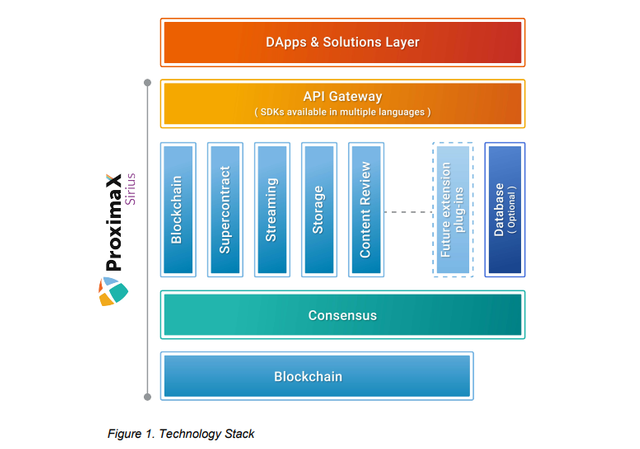
It is an extendable platform with cutting edge technology which is application agnostic and a platform that aims to become a utility-rich platform. The blockchain layer using consensus and reputation system keeps on managing the nodes in on-boarding and off-boarding process and this is a tricky process, as ProxiamX ecosystem is an ever expanding ecosystem of different node actors. But this ecosystem brings the immense possibility of use cases and utilities of blockchain in the traditional business domain. Some of the examples of use cases where ProximaX can best serve are: Identification/KYC, Finance, Data management, Work force collaboration, Supply chain management, Trade, Exchanges, etc. However, the possibility of this platform is much bigger than the above use cases.


Sirius Chain is the place where all the recording of the transactions is done. It is the place where all the contracts are coded and executed. The incentivization of the various nodes is done. The Sirius chain is the center of the platform which is like a place where the stats of the entire service layers can be found as for every activity which is done in the service layers are later recorded in the Sirius chain. The consensus is an important mechanism for every blockchain which further defines security and scalability of the network. As ProximaX is a bundle of blockchain and distributed service layers, the linear scaling capacity is essential. And the security of the network is also equally important to create a secure environment so that businesses can deploy their applications and render various services. Sirius uses a modified consensus by combining PoS and PoG together to ensure scalability ad security both.
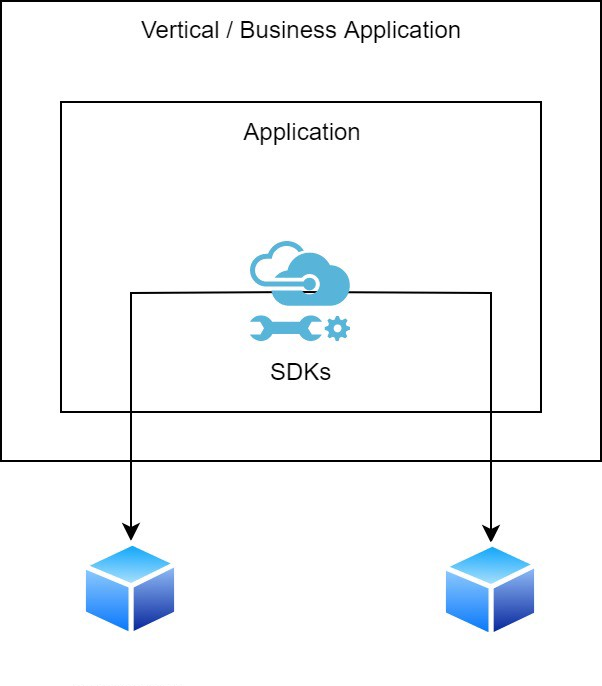
In a digitized world and blockchain domain, contracts are very common and a general requirement nowadays. In ProximaX it becomes even more important as ProximaX along with the blockchain layer offers a variety of service layers. So for every service utilization, the use of a contract is a general case. That is why Sirius chain is the main center of this platform. It also offers all the advanced features which any business may require. The advanced features are namespaces, account, supercontracts, mosaics, metadata, etc. which in some form or the other addresses the requirement of the business.
Account -For consumption of a service, an account is required.
Namespace - A namespace is just similar to the web domain representation of a business. In blockchain, ProximaX has created “namespace” for business identity in the underlying infrastructure.
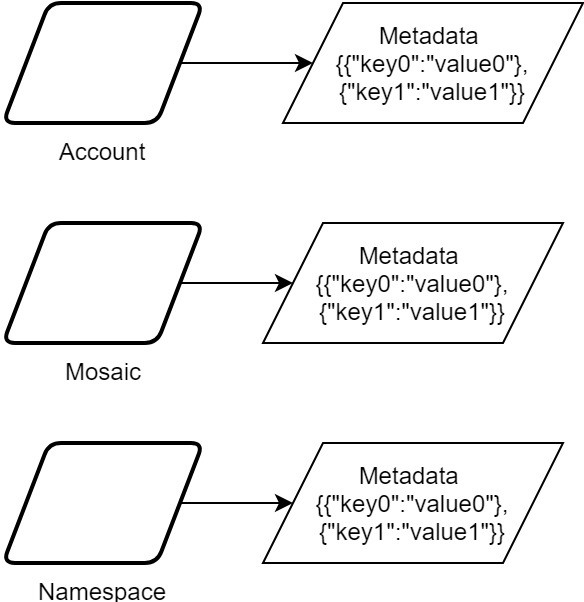
Mosaics - In a digitized world, any business can be tokenized with the power of blockchain technology. But to organize it further, the asset representation is essential which differs from one business to the other. So mosaic is a contract that can represent any type of asset. So all the business that thrives on the ProximaX platform can use mosaic to represent any form of asset they want. In general terms, mosaics can represent anything. It can be a service, can be a token, can be a share, can be a human, can be an animal and can be anything a business wants to represent.
Metadata - In blockchain, everything is immutable. So whatever is recorded cannot be altered or erased. But the state objects may need additional data in the delivery of its business discourse. Therefore some flexibility is practically required. ProximaX has recognized this practical requirement and offered Metadata which can be used as a data attachment to various state objects and metadata can be added, uploaded and deleted.
Multi-level Multi-signatures - The agreement between any two parties always requires a signature which represents a form of consent. In real business, there may be many types of business deliverables which may require business approvals at various level, so multi-signatures at multiple level is a very practical requirement which is facilitated with multi-level multi-signatures of ProximaX Sirius.
Cross-chain transaction - When various sub-chains will build upon the top of ProximaX Sirius chain, it will automatically become a practical use-case for these chains to interact with the main chain tokenomics to render various services. So cross-chain transaction facility which uses “atomic swap” is also included as an advanced feature in ProximaX Sirius.
For utilization of all these features, there is a defined fee structure in Sirius chain. So the SDKs are accordingly configured with this default fee structure. Whenever a consumer wants to use a particular feature, the rental is to be paid. The SDKs are configured with the following strategy.
- High transaction fee = Recommended transaction price for consumer * 0.025
- Medium transaction fee = Recommended transaction price for consumer * 0.0025
- Low transaction fee = Recommended transaction price for consumer * 0.00025
- Mosaic rental fee = 10,000 XPX one-time payment
- Namespace rental fee = 10,000 XPX per year
Sirius chain ensures that the decentralized applications run smoothly, it reaches consensus for every designated activity, it must ensure scalability and security of the network. It must also ensure that the nodes are adequately incentivized as per the contracts for the services they render.

Sirius network allows the devices and in general, the simple devices can also join the network. The resource requirement threshold is very low as it uses PoS as its consensus, which is both eco-friendly and resource-efficient.
The node’s wealth and age are important to have a good reputation score and a good reputation will help to become a validator node. Once a node becomes a vliadator node, it will start processing the transaction and earns block rewards.
So the general process is that the node will stake XPX tokens and the node’s account history will be checked by the validator software. If the account history is in good standing, then the reputation score will be good enough to become a validator node. The account history of a node contains all the data like the wealth of the node, how older is the node, etc.
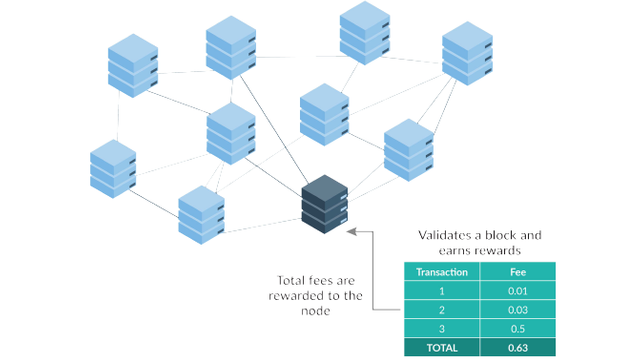
So a participant or a node should first stake XPX. The minimum amount should be 250,000 XPX and the recommended amount should be 2,500,000 XPX. The second criterion is age. So older a node is in the network, higher is the probability of being selected as the validator node.
PoS alone may not be secured for the Sirius network and not even possible to maintain the decentralization. In PoS the rich generally get richer and the stake centralization often happens in stake based consensus. It also has the threat of 51% stake attack which is known as large stake attack.
Proof of Greed is introduced by Sirius network to make the security robust and to make the network linearly scalable with PoS and secured against the attacks like large stake attack and zero stake attack.
PoG also prevents the greedy attitude of a node. Even though stake based mechanism is there, a node can be greedy, neither in terms of stake centralization nor in terms of high transaction fees for processing a transaction.
The transaction fees are taken by the validator nodes on the basis that the consumer first offers a rate and then all the unconfirmed transactions with the offers of transaction fees by all the respective consumers are placed in one pool of unconfirmed transaction. The validator nodes can take a transaction and process it from this pool, but cannot charge an amount which is higher than the maximum offered in that pool. In general terms, a validator node cannot be greedy and it is the consumer who gives a reference to what maximum a node can charge for a processing a transaction. This also establishes a true decentralized spirit in the network.
Zero fees attack- It may happen that some nodes start processing transactions with zero transaction fees and may try to make the PoG mechanism useless and may ultimately create a hostile situation in the network by gaining control over it.
PoG also includes a mathematical algorithm which reinforces the security aspect against zero fees attack by allowing most of the validators to process the transaction who take average fees. So the actual concentration of validators will always be in the average fees band and not on the higher or lower fees band.
Large stake attack- The 51% attack is known as large stake attack and the nodes start concentrating wealth with an aim to earn more block rewards and to gain control of the network on premise of staking of wealth. ProximaX may be based on PoS where stake is a mandatory requirement but PoG enforces the node to distribute the stake evenly and it is not necessarily mean that the high stake holder will only get an opportunity for processing the transaction. Even a small stake holder satisfying the reputation criteria can also become a validator and process a transaction.

Storage
Any type of data(be it text, video or audio or any structured or unstructured data) can be stored in the storage layer of ProximaX. It is distributed and decentralized. The data is broken into different pieces, encrypted and then stored across various nodes of the storage unit. The nodes receive a payment for storing the data of a user. The storing of data request can be initiated by any user and for that there is a process with contract obligations & offering by the consumer to reach an agreement with the nodes and utilize the storage service. The related consensus in storage service layer is proof-of-storage.
The storage request is recorded in Sirius chain as transactions. Acceptor nodes and Replicator nodes are the key node actors for executing a storage service to an user.
The acceptor propagates a file to the replicator and the replicator then re-creates that file and store that file of the user. Both the acceptor and replicator nodes are incentivized. The incentivization for storing a file is in SO unit and for sending a file is in SM unit. Therefore the acceptor node is incentivized with SM unit as it propagates and the replicator is incentivized with SO & SM units both as it stores and as well as re-creates the file.
SM, SO, SC, units are the representation of service unit like streaming, storage, supercontracts respectively.
The nodes have to proof their storage capability before being considered for a storage service. Multi-signature mechanism is used to identify the genuine replicators which can render the service in the storage node. .
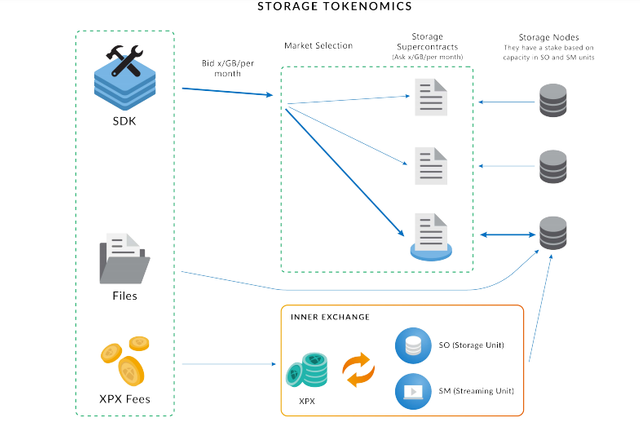
The user can initiate the storage request by paying XPX token, the XPX token is converted into SO, SM units in storage nodes as these units are paid for the incentivization of the node. The capacity and capability of the node is ascertained and the nodes have to stake the required SM & SO units to be considered for an offer. If selected the nodes are paid with those units as mentioned in the contract of the user who initiated the storage contract request. The user is then rendered with the requested storage service. The contract also mentions other elements like duration, size of the file to be stored, etc.
Streaming
Both storage streaming and live streaming are possible utilizing the distributed streaming unit of ProximaX.
The storage streaming is similar to watching a saved or stored file in Youtube or Dtube or facebook. Live streaming is similar to watching a live cricket match or a football match or a live concert or a music show or anything that is broadcasted live.
So in storage streaming, the data is first recorded, then it is stored utilizing the storage unit and then broadcasted utilizing the streaming unit.
In live streaming, the data is recorded live and broadcasting is also done simultaneously. So the utilization of storing and streaming happens simultaneously. The live streaming is again of two types: 1-1 live streaming and 1-many live streaming.
The related consensus in the streaming unit is proof-of-bandwidth. The proof-of-bandwidth verifies the bandwidth of the stream landing node or stream distributor nodes(which generally are the intermediate nodes and responsible for sending data from one end to the other) by using time tags. The time tags are sent from one node to the other. The node which received the time tags then signs it back and sent it back to the sender node. So if the bandwidth will be enough, then the time tags will not be dropped and it will reach to the receiver end and if the bandwidth will be poor then the time tags will not reach to the receiver. Using this technique the bandwidth is verified for a node and the nodes with poor bandwidth are not selected for a streaming service, whereas nodes with rich bandwidth are selected for the streaming service.
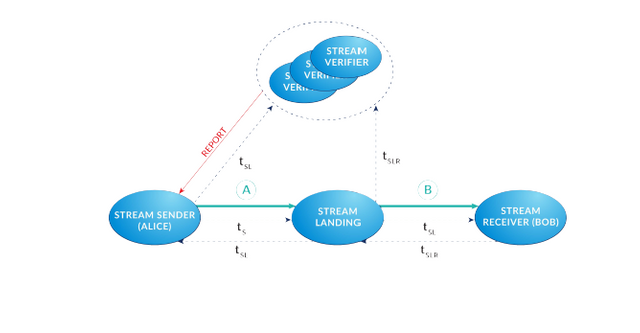
Nodes and their functions in streaming units:
- Stream Discovery node: Maintains a list of authenticated streaming nodes.
- Stream Landing node: Receives content from a Stream Sender and broadcasts it to
one or more Stream Distributor nodes and/or Stream Receivers. A Stream Landing
node is selected from a list of Stream Verifier nodes. - Stream Verifier node: Verifies live streaming status, reports performance of Stream
Landing nodes to a Stream Sender, which can trigger re-election of faulty Stream
Landing nodes. - Stream Distributor node: Multiplies content (fan-out) and distributes it to one or more
Stream Receivers. - Stream Sender: Broadcasts live streaming data (sender, start point).
- Stream Receiver: Receives streaming data (recipient, end point).
Important Points
- In 1-1 live streaming the node arrangement is from stream sender to stream receiver via stream landing node.
- In 1-many live streaming the node arrangement is from stream sender to stream receiver via stream landing and stream distributor nodes.
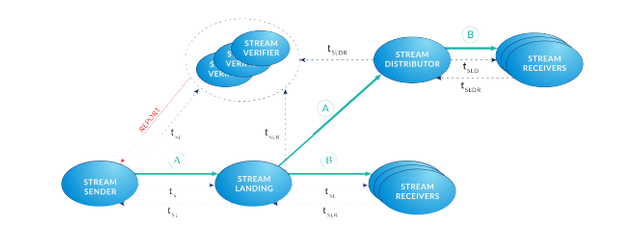
Database
Database layer is not a public offering by ProximaX and it is exclusively for private blockchain or hybrid blockchain. It uses BigchainDB that stacks MongoDB for a distributed database. It uses Tendermint as the consensus. It has all the features of the blockchain such as asset management, metadata storage, transactions, contracts, etc. It is distributed, decentralized, but permissioned. This layer is a very useful service layer for identity and KYC management. By utilizing this layer, the govt agencies can optimize the KYC check and enrollment process of the citizens of a country which can be both faster and cost effective.
Supercontracts
A supercontract can be custom built to run a specific business use case.
Unlike the rigid smart contract, the supercontracts are flexible. In general terms, supercontracts can be modified even after its execution. No one is perfect in this world, but we can approach to perfection. The business logic is written with due diligence, research and experience but still some anomalies very often exist in real world businesses. So a rigid contract can only create complexity to the business objective. So a flexible contract like supercontracts can take the place of smart contract in ProximaX.
Acceptor, replicator and executor nodes are required for the execution of supercontracts. So all these nodes are incentivized whenever a supercontract is loaded, executed and stored. It can be written with programming languages like Java, C++, Python, C#, Golang, Js and Rus, etc. So it is developer friendly too. The developers can use SDK to call a supercontract. A supercontract can be uploaded, executed, modified, stopped, deleted, etc as per the requirement of the business and but any of the above must be in consent with the pre-approved parties under consideration of a contract.

There are three types of tokens that prevail in the tokenomics of ProximaX.
- XPX is the native token which powers the blockchain layers and also required for using various platform services.
- Service units are required for using various service layer of ProximaX. For example SO for storage, SC for supercontracts, SM for streaming. Depending upon the use case one may require one or more than one service unit for payment to the nodes.
- Mosaics which are created as built-in contracts for asset representation to power the internal economy of decentralized applications.
1 SO corresponds to 1 GB of space per month.
1 SM corresponds to 1 streamed GB.
1 SC corresponds to 1 supercontract instruction code.
1 RW corresponds to 1 XPX worth of paid content.
1 SO = USD 0.004
1 SM = USD 0.02
1 SC = USD 0.000005
1 RW = USD 0.005
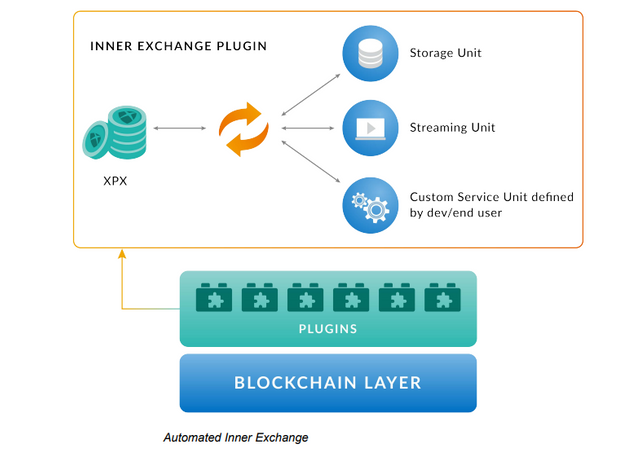
Using automated inner exchange the XPX token can be exchanged for service units and the service units can further be paid to the nodes for rendering various services as per the use case. The dapps will also require inner exchange service for various business purposes. So automated inner exchange is vital for the tokenomics of ProximaX.

Most of the large businesses have their own developer team to develop their own applications and based on the requirement they may choose one blockchain infrastructure as per their suitability. The small businesses cannot afford to hire a developer and most of the time they settle with the centralized system. This is the current state of blockchain infrastructure.
But ProximaX as a blockchain solution is not just a blockchain and it has combined the blockchain with various service layers and the service layers are mostly general to almost all business applications. For example, if you are planning to develop a steemit like project or dtube like project on the top of ProximaX, you need not have to develop additionally a storage unit or streaming unit. All of these are already available as a universal solution in ProximaX. So one can cut short the developing of service layers from scratch and they can be plugged into the service layers of ProximaX via API and build their application on the top of ProximaX. The projects can utilize inherent blockchain properties of proximaX along with the service layers as a plug-in service. So blockchain application with ProximaX can be more general than ever.
So ProximaX can facilitate all types of businesses and enterprises as a universal blockchain infrastructure.

- It is cost-effective
- Most of the development which is required in general is already developed by ProximaX and being offered as different service layers which combine with the consensus layer.
- Almost any type of application can be developed on the top of ProximaX and can be quickly put into operation for business deliveries.
- It covers a wide and extensive range of use cases.

There is a construction company known as GDX Ltd, which has an employee size of 4500 who are on the company’s payroll. The company wants a cost effective solution for issuing company’s ID card to its employees and to manage the business deliveries to its employees. It is looking for a solution which can work in close association with HR, Stores, Finance department. The solution should be such that any authorized department within the company can access, check and verify the employee details spontaneously and can also update it in a decentralized & secured way. The data security is important, therefore it is looking for a blockchain solution and it is also looking for a storage layer to store the data of the users. Explain how ProximaX can best fit for this use-case of GDX Ltd.
ProximaX can deliver this use-case of GDX Ltd in the following ways: The employees are requested to submit their personal obligatory information (such as full name. address, blood group, Phone number, marital status, a clear color photo, etc) which is needed to share with the company. After checking all the data a new account for each employee is created and it is also mapped to the storage layer of ProximaX. The account has a public key and a private key. The account is also a multi-signatory account. As it is a multi-signatory account, for any business deliveries such as attendance record, salary withdrawal, leave, mediclaim, etc the respective departments like HR, Stores, Finance can co-sign into the account and update the business deliveries to the employees. For this use case, the storage unit will be utilized and multi-signatory will be frequently used. The user can only edit the data in case there is any change in the information, for example, if an address is changed and the new address is to be updated then the user can do so and after verification, the same will be updated in the database of the company. Here also the multi-signatures can be used. All the information can be put into the ProximaX Sirius platform and only the ID card number and the name of the employee are publicly visible. It must be noted that ProximaX uses encryption technology and stores the data across multiple nodes in the storage network, so the information & identity record is secure and cannot be leaked. GDX is pleased with all these features of ProximaX and decided to integrate with it. The pre-configured infrastructure in the form of various service layers along with the fundamental benefits of blockchain is the latest solution in the form of ProximaX. I would like to give credit for the tireless development they have done over the last year. Looking at the wide array of applications and use-cases it has established itself as a new-genre extensive utility-rich platform. This could be a new and redefined direction for most of the blockchains in coming future.
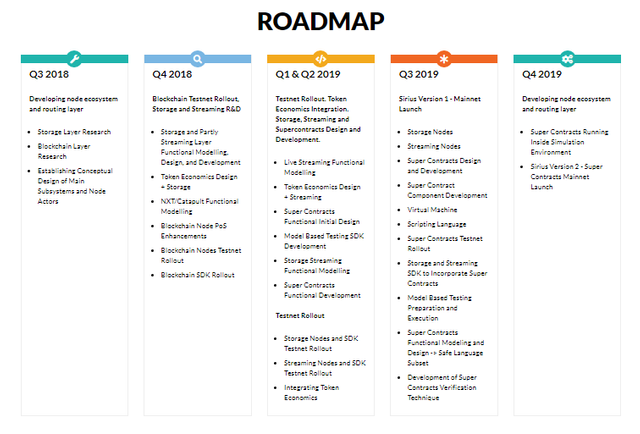
More Information & Resources
Image Source- Official website and blog page of ProximaX
Congratulations @crypto-wisdom! You received a personal award!
You can view your badges on your Steem Board and compare to others on the Steem Ranking
Do not miss the last post from @steemitboard:
Vote for @Steemitboard as a witness to get one more award and increased upvotes!